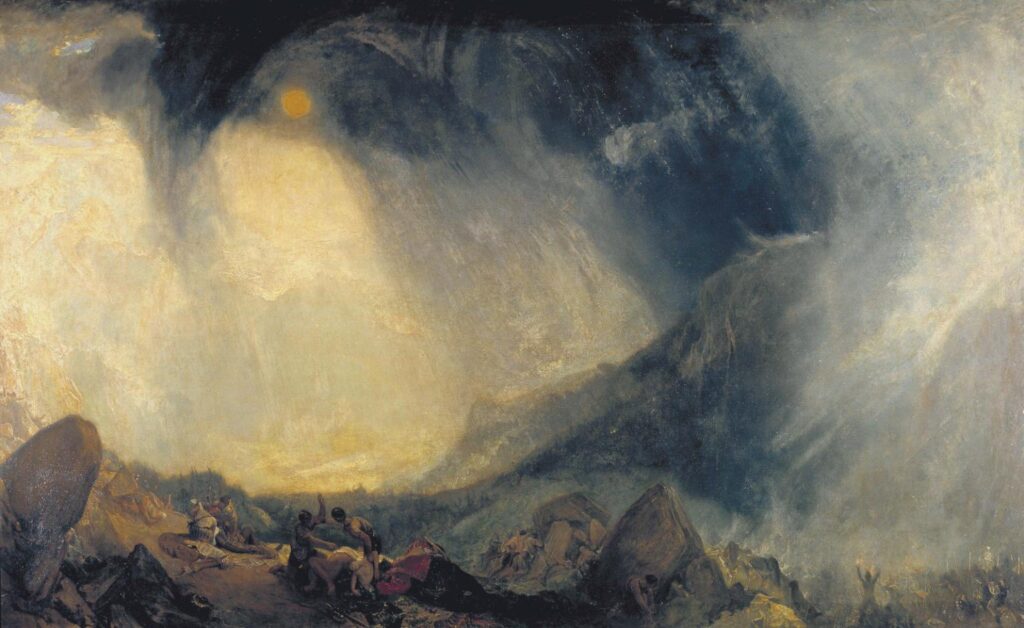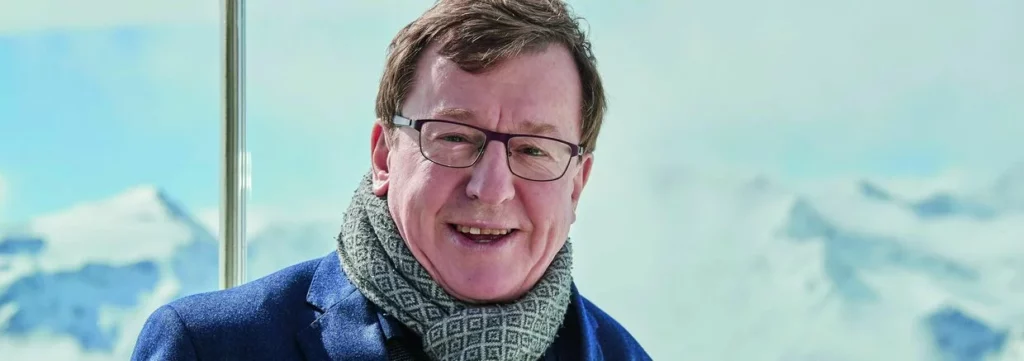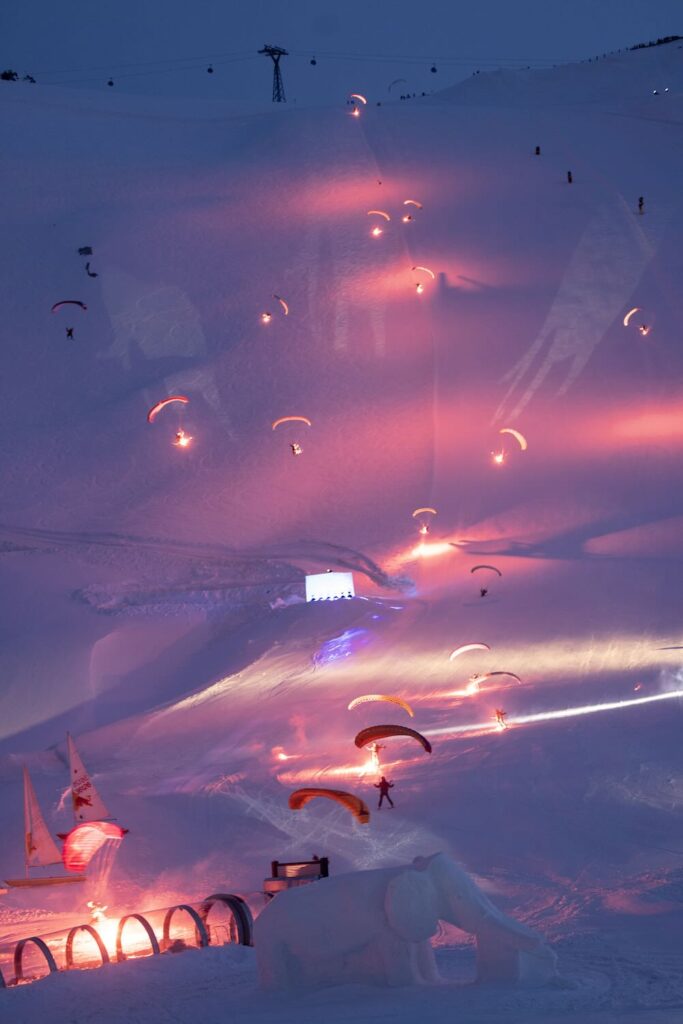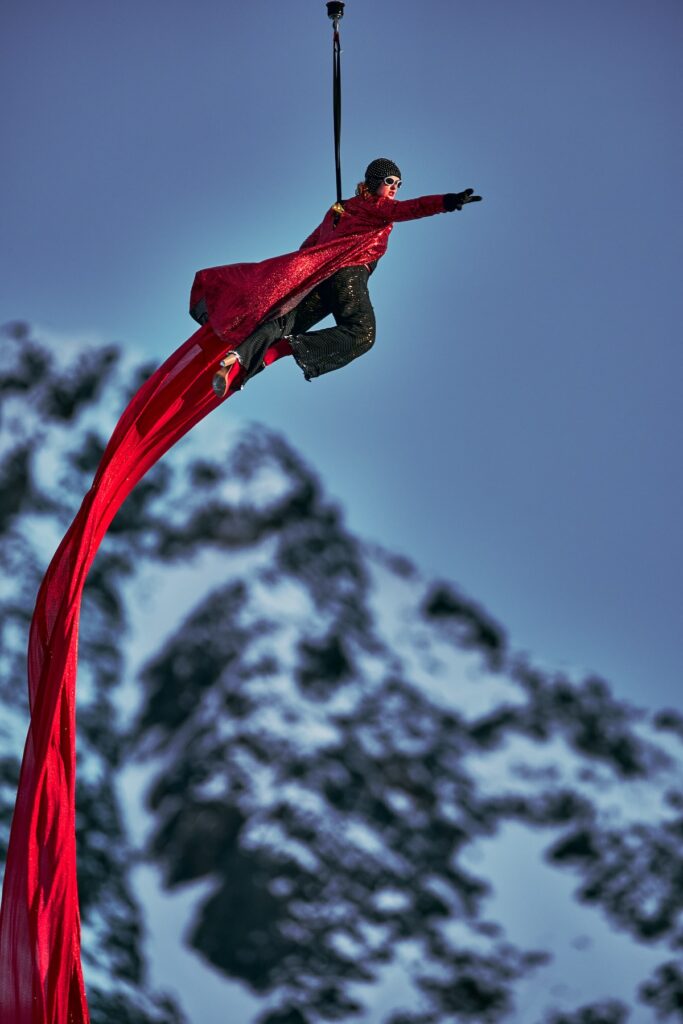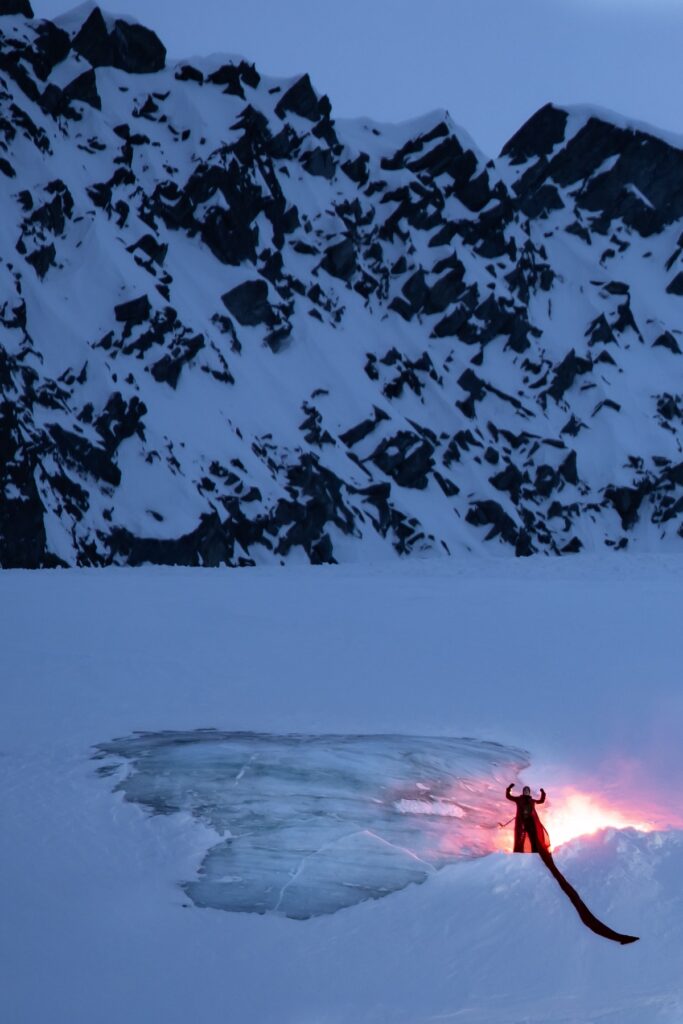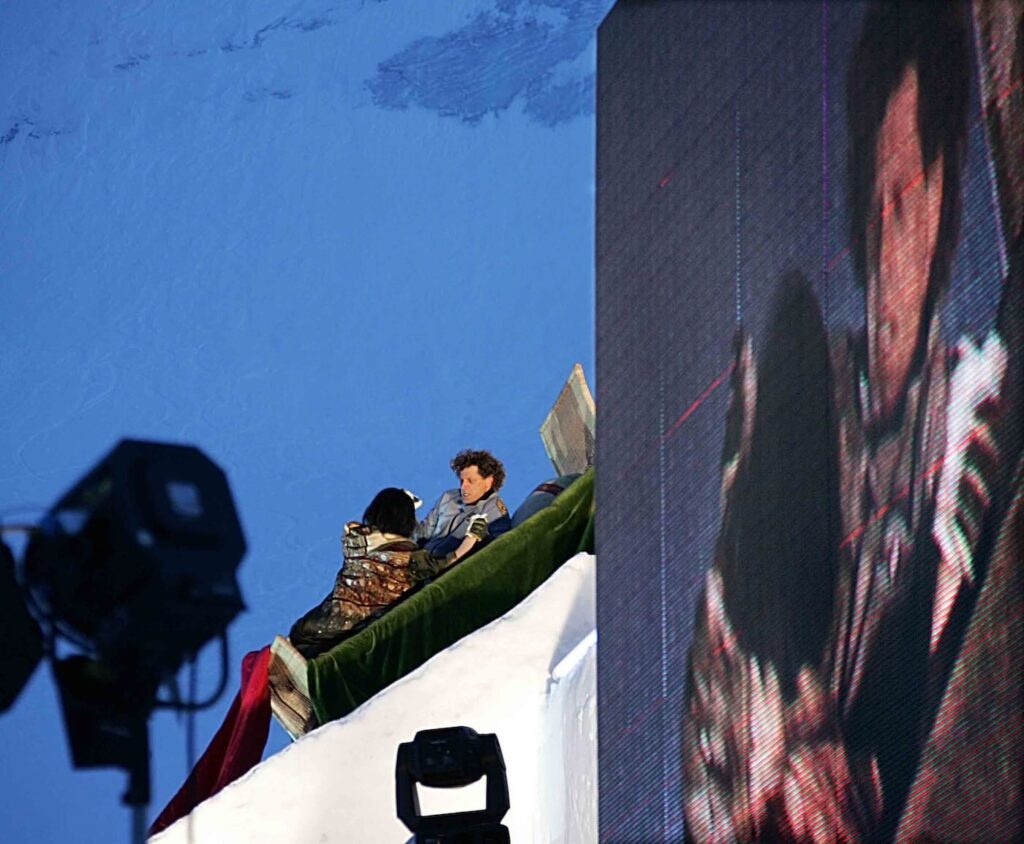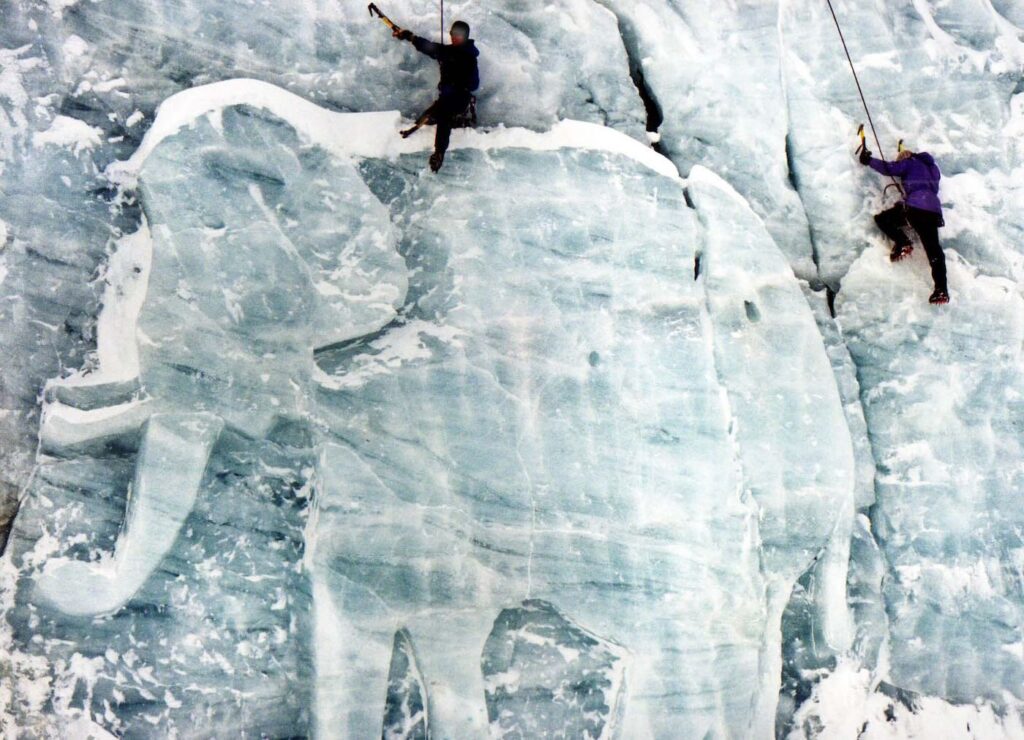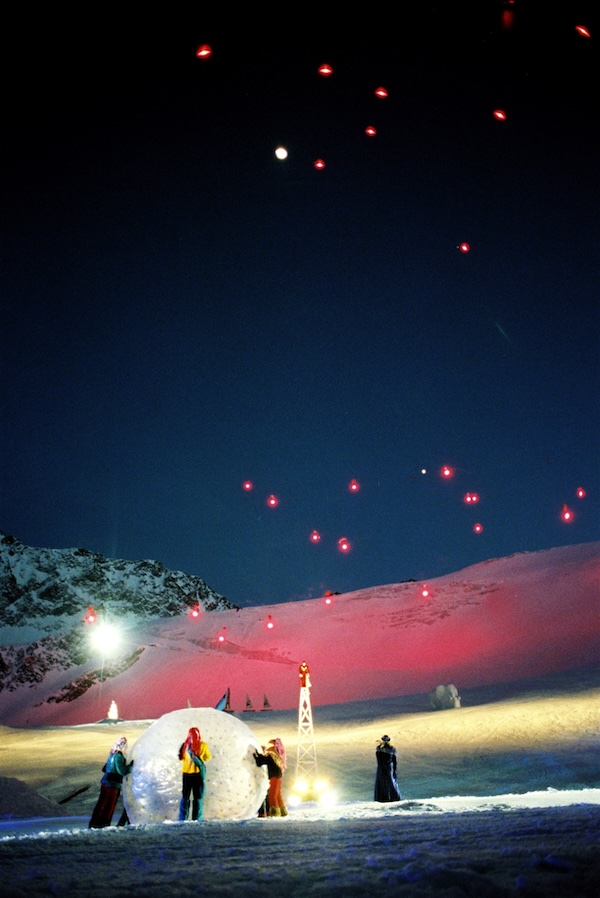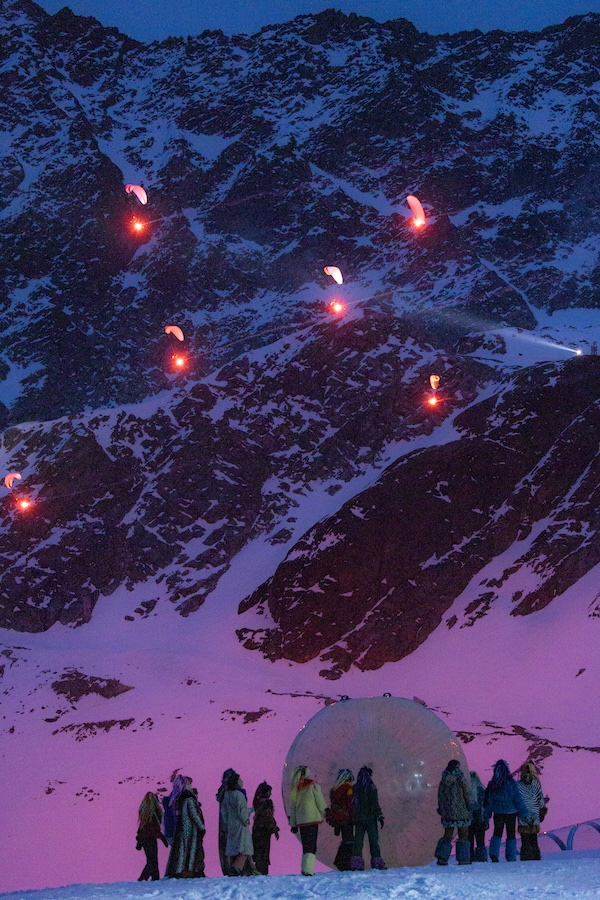The choreography for the piece was created by Detroit-born Donna Jewell. A multi-award-winning cheerleader, she initially studied and taught history, only embarking on a solid dance education at the late age of 24. A multi-award-winning cheerleader, she initially studied and taught history, only embarking on a solid dance education at the late age of 24. In 1994, she came to Salzburg to teach at the local dance academy. It was here that Hubert Lepka suddenly sat in on her class with colleagues to get to know the artist, who was new to the region. Since then, she has worked as a choreographer and performer in some of the works of his artist network Lawine Torrèn. She appreciates Lepka’s very unique and much-discussed aesthetic. Jewell understands his approach, his closeness to nature, no matter how many machines or animals he uses. She appreciates how he engages with the competition that lies in the impressive natural world, which always acts as a manifestation of man as an eminent part of the world: “His approach can be very joyful, showing how beautiful this world is, but also that we are very vulnerable.” Over the years, she has observed that Lepka increasingly emphasizes this vulnerability of bodies and people by creating ever more dangerous settings for his plays. For example, in “Hannibal,” when the dancers prove themselves amid jumping skidoos (motorcycles racing on skids) and surrounded by motocross machines and snowcats spinning wildly in circles under rotating helicopters in a choreographed group battle on snow and ice. It seems to send a message: “We can get through this if we stick together.”

